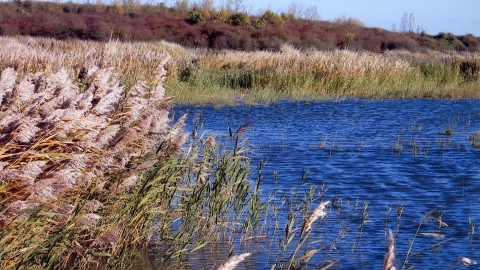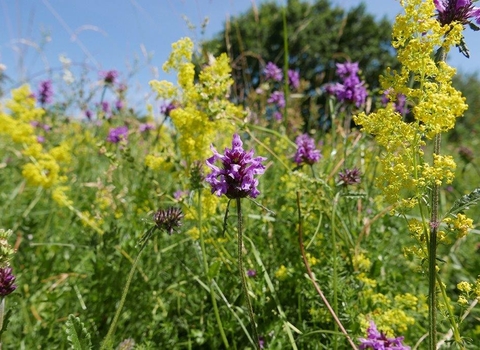
Dogsthorpe star pit credit Tim Burke
Dogsthorpe Star Pit
Location
Know before you go
Dogs
When to visit
Opening times
Open at all timesBest time to visit
March to May, June to SeptemberAbout the reserve
The pit was created when clay was excavated to supply the nearby Dogsthorpe Brick Yards and later transported via an aerial ropeway to the Northam Brick Yards in Eye. When the clay in the pits ran out, the site developed naturally into a wildlife haven, preventing it from being used for landfill. After excavations ceased the pit flooded and nature slowly returned. In 1997 ownership was transferred to WTBCN and water was pumped out to bring back the important shallow pools. It is now a designated Site of Special Scientific Interest and a Local Nature Reserve.
The outstanding wildlife interest is the 63 species of water beetle found in the shallow pools. Damselflies and dragonflies also emerge from the pools in spring and summer to fly along the edge of the water. Kingfishers hunt fish in the pools while snipe, shoveler and teal feed at the water’s edge. The reedbeds provide important habitat for birds; bittern and marsh harrier have been known to nest here. Also on the site are isolated pools where invertebrates seek refuge away from the fish in the main lake.
The grassland banks are cloaked with flowering plants including bee and pyramidal orchids, which attract insects such as the meadow brown butterfly. Sparrowhawk, marsh harrier, tawny owl and kestrel hunt here. The trees and shrubs provide an area for a variety of birds including woodpeckers, longtailed tit and greenfinch.
Our management work includes re-excavating the pools and creating new ponds with diggers to ensure we maintain a mix of different successional stages. We mow the meadow areas and keep them clear of scrub.
The underlying clay was laid down more than 150 million years ago in the Jurassic era and contains many small fossils. In 1983 geologists found the fossilised remains of the two-metre long Jurassic fish Leedsichthys in the clay pits (Leedsichthys is named after Alfred Nicholson Leeds who lived at Eyebury, the Leeds Hall is named after the same family). The fish was thought to have lived on plankton and krill, and would have grown to 16 metres in length.
Across Hodney Road from Dogsthorpe Star Pit to the east, Little Wood is an area of ancient woodland with large pollarded oaks; visit in spring to see the bluebells.
Additional information
- Note that the water is extremely deep and cold; no swimming is allowed.
- Beware: the clay in the pit is soft and may behave like quicksand.
- Scroll down to see the reserve boundary. Please note the boundary map is for indication purposes only and does not show the Wildlife Trusts definitive land boundary.
FOR ANY MEDIA ENQUIRIES PLEASE CONTACT OUR COMMUNICATIONS TEAM: communicationsteam@wildlifebcn.org or 01954 713500 and ask for comms team.

